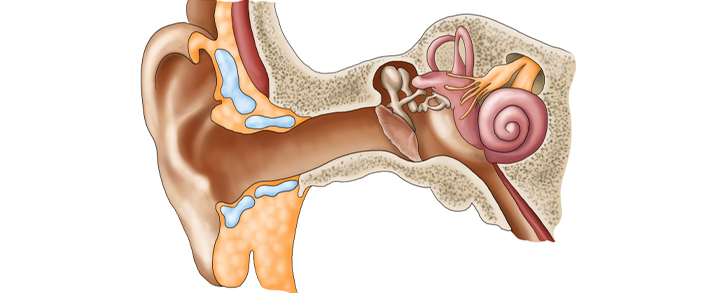
The ear has two functions: to enable us to hear and to enable us to maintain our balance.
When talking about the ear, we normally divide it up into three different sections: the outer ear, middle ear and inner ear.
Hearing
The basic idea behind hearing is that the ear takes in vibrations from the air and converts them into electrical nerve impulses. These are then sent on to the brain, which interprets them and allows us to make sense of the sound information we have picked up.
Outer ear
This consists of the part of the ear we see (called the pinna) and the ear canal, a tube that starts just within the opening of the pinna and runs up to the eardrum. The pinna collects sound and focuses it down the ear canal into the rest of the ear. When the sound waves reach the eardrum, this vibrates.
Middle ear
There are three little bones found just behind the eardrum, commonly known as the hammer, the anvil and the stirrup. The hammer picks up the vibrations in the eardrum and passes them along the chain of bones and into what is known as the labyrinth.
Inner ear
The labyrinth is full of fluid, and so here the vibrations are converted into tiny waves. A thin membrane is also found here and moves with the waves. At the base of the labyrinth is the spiral-shaped cochlea. This contains microscopic ‘hairs’ that create electrical nerve signals when they are bent by the fluid or the membrane. These signals then travel along a nerve to the brain, where they are interpreted.
Balance
At the top of the labyrinth we find three hoops full of fluid: the semicircular canals. These contain more tiny ‘hairs’ that fire signals as the fluid sloshes around while we move, letting us know what position we are in.
